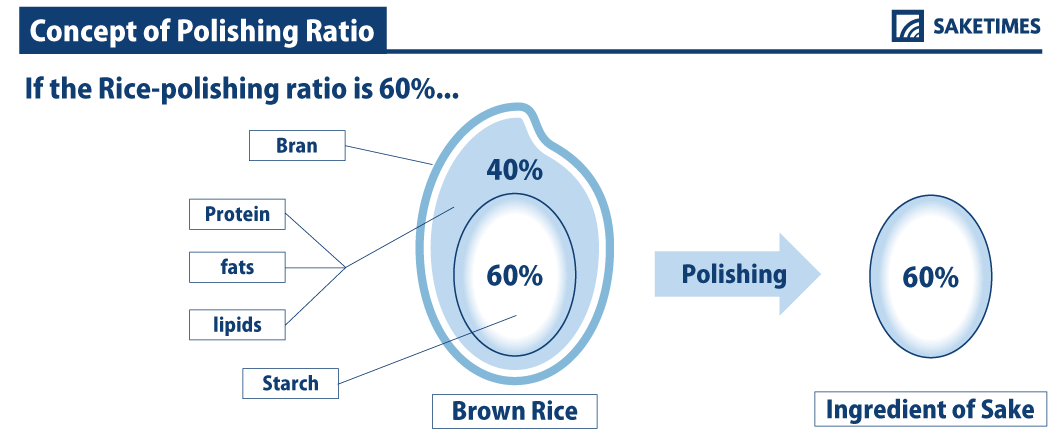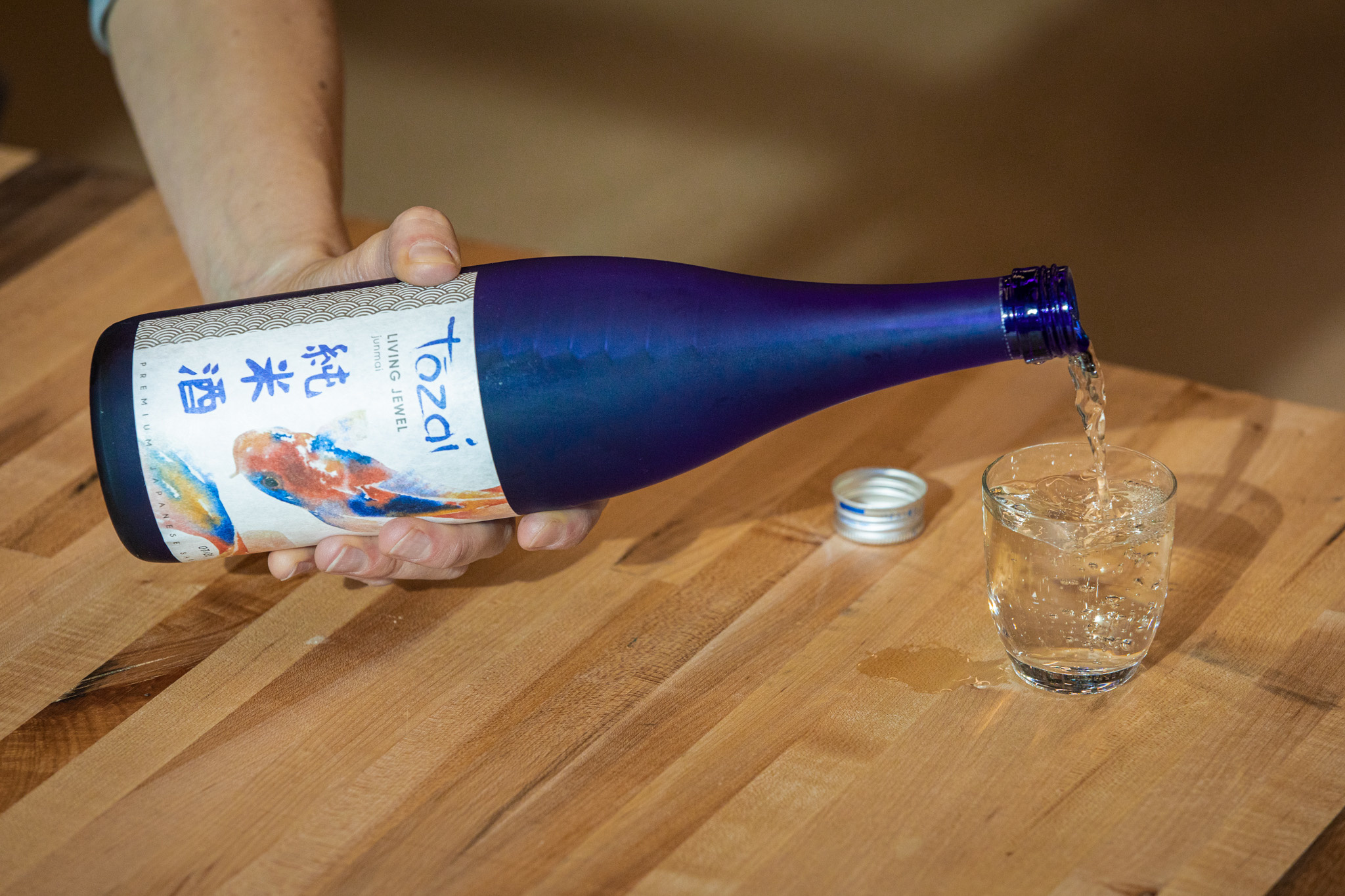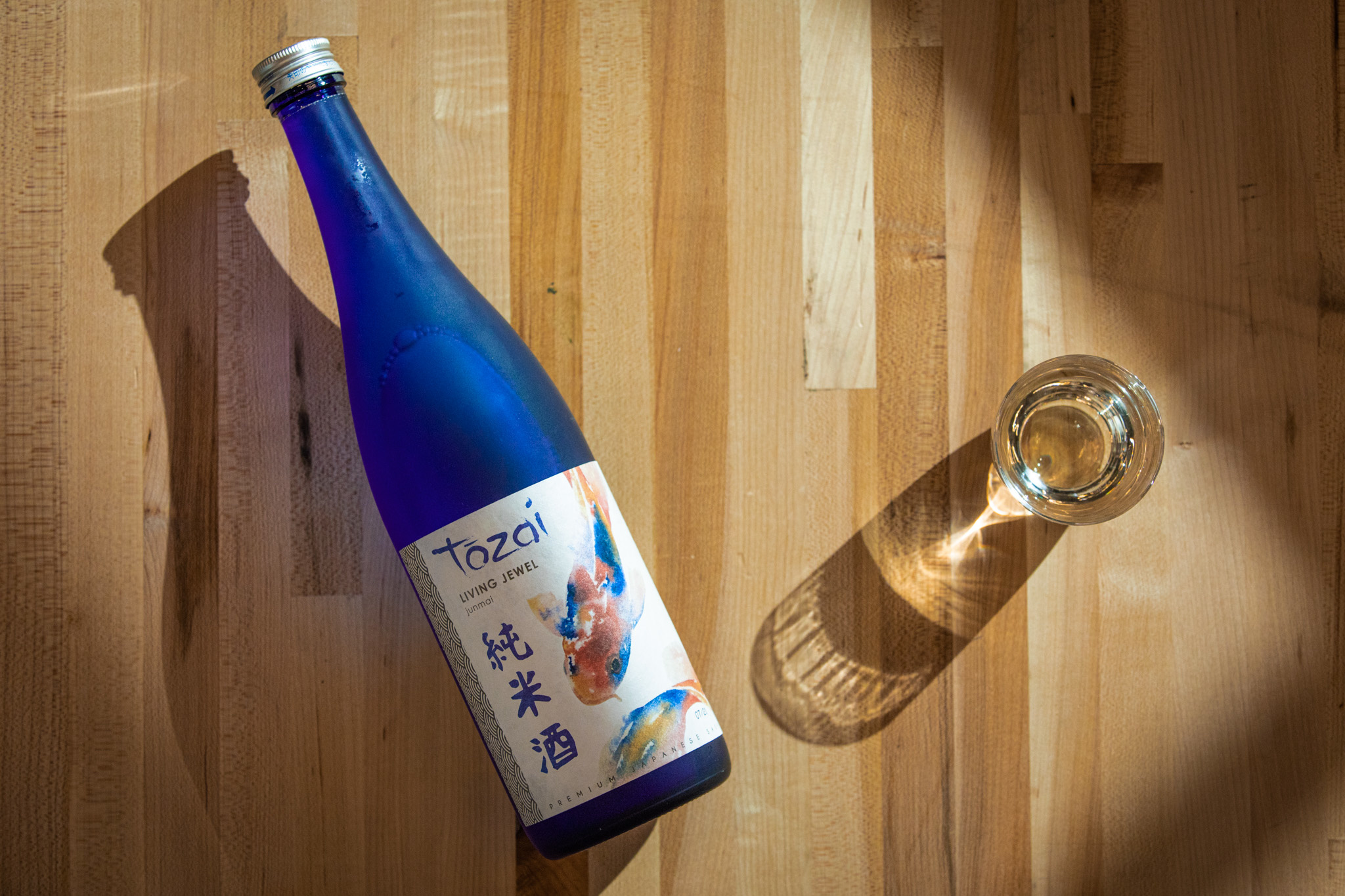Your Top 10 Questions About Sake Answered
Photo by Jordan Wipf
Deeply enmeshed in a cultural tradition that's both alluring and esoteric for the average American drinker, finding a "way in" to sake can feel a bit like trying to explore foreign films. In both cases, the experience can be deeply rewarding and a lot less intimidating with the help of a well-informed friend!
Speaking of friends, we contacted our pal Tyler Provolt, The Wine Company's resident sake enthusiast, to answer a few of the most common questions that shoppers ask us about sake. Kampai!
Celebrate World Sake Day with us on Saturday, October 1! We'll be sampling sakes all day and select sakes are 15% off when you purchase two or more (offer valid in-store only).
Sake is rice wine, right?
Sake is a fermented alcoholic beverage made from rice which has its historic origins in Japan. It is not accurate to call sake rice “wine” because it’s made from a grain (rice) and is therefore more closely related to beer.
However, sake shares some characteristics (and differences) with both beer and wine. For example, sake is more similar to wine in terms of alcohol content…but then again, it shares certain ester-y fruit aromas with beer. Finally, it is completely different from both beer and wine, in that the sake production process includes a secondary fermentation involving a mold, which is called koji.
Does sake have to be made in Japan?
Sake has its historic origins in Japan, and the majority of sake you’ll see in stores is made there, but sake is now produced on every continent and in many different countries.

Graphic via SakeTimes
What information on the label should I pay attention to when shopping for sake, and what do terms like Junmai, Ginjo, and Daiginjo mean?
A few introductory/elementary things to note on a sake label would be both the country of origin and alcohol content.
Junmai is another important term that means “no alcohol added.” This refers to the fact that, as you probably already guessed, some sakes do contain added alcohol. Added alcohol doesn’t automatically make for an inferior product, either. “Honjozo” sake is produced with a small amount of added alcohol, which is said to make certain aromas and flavors more vibrant.
Premium grades of sake are designated by the categories of “ginjo” and “daiginjo.” These terms refer directly to the degree of polishing that the sake rice undergoes prior to the production process (40–50% of the grain is polished away for ginjo, 50% or more for daiginjo). The additional polishing of the rice grain creates a more refined beverage free of off-flavors.
Finally, some sakes are made in an “old-fashioned” or traditional manner that are labeled as “yamahai.” These are special, earthy sakes that is probably best to experience after trying some of the more straightforward products.

Graphic via SakeTimes
Is sake always supposed to be served warm?
Sake can be served at a broad range of temperatures. Ultimately, the temperature at which sake is served alters its taste and is a choice that each consumer must determine based on one’s individual preference. Traditional wisdom has commonly held that certain styles and grades of sake are more suitable for service as a warm beverage (most notably Honjozo sakes).
As a general rule of thumb, more fragrant and delicate sakes (such as ginjo/junmai ginjo and daiginjo/junmai daiginjo) are best served chilled but not cold (around 50°F), while richer sakes like junmai and honjozo are often served at room temperature or warmed.
What type of drinkware should I use to serve sake?
In Japan, sake is traditionally served in small ceramic cups, often with concentric circular patterns painted at the bottom of the cup to help judge color and clarity. Elaborate social rituals surround the pouring and refilling of sake in Japan, and smaller cups offer more opportunities for refills. If you’re serving sake at warm temperatures, small cups or mugs (espresso cups work great) should stand up well to the warmer temperatures.
More fragrant, chilled sakes can really benefit from the usage of a tulip-shaped glass to concentrate aromas. White wine glasses and spirits tasting glasses make great candidates here, but any glass with a wider bowl and narrowed opening can help enrich your experience.
Why are some sakes cloudy, while others are clear?
Whether a sake is either clear or cloudy (or some intermediate level of clarity) is determined by the level of filtration that a sake undergoes during the conditioning process. The most conspicuously cloudy sakes are typically those of the Nigori category. These have extremely high levels of residual rice solids that are 100% intentional and add to the sensory experience.
When I’m tasting a sake, what are the common flavors or flaws to watch out for?
Sakes feature a number of stereotypical flavor profiles and qualities. There are a range of fruity flavors ranging from melon to banana to plum/cherry, as well as complementary accompanying umami/earthy flavors that are reminiscent of Parmesan or bleu cheese, damp earth, and some spicy barnyard qualities.
Some off-flavors can be associated with old or temperature-compromised sake, while other off-flavors are related to excessive heat or alcohol burn. The most pleasurable and elegant sakes will not taste noticeably alcoholic in general.
What qualities elevate a good sake into an excellent sake?
This question begins to broach the realm of personal preference. I like sauerkraut, pickles, mushrooms, bacon, spicy foods, black coffee, etc, and I detest mayonnaise. There is no universal standard when it comes to taste, and sake follows this same principle.
While I personally love sakes that feature elements of earthy umami which complement the naturally fruity qualities inherent in sake, these distinctive flavors are probably not everyone’s perfect cup of tea. I would say however that a lack of obvious alcohol-heat, and a clean texture would be considered almost universal indications of quality.

Photo by Jordan Wipf
How should I pair sake with food? Are there cuisines that work better than others?
Obviously, it would be very easy and extremely correct to say that sake is a natural pairing with most, if not all types of Japanese cuisine. However, just as there are quite a broad variety of sakes, so too are there many pleasurable sake pairing opportunities. A few basic categories to try: Any fish dishes, spicy foods generally, and also most barbecue or grilled food.
How long is sake good for after opening and how should I store it?
For best results, sake should be consumed within one week of having been opened (as a general rule). Sake is normally intended to be opened and enjoyed within a year of its production, outside of a few styles that are intended to be stored or aged. All sakes (like beer) are best stored in cool, shady conditions in order to maintain maximum freshness and quality.






